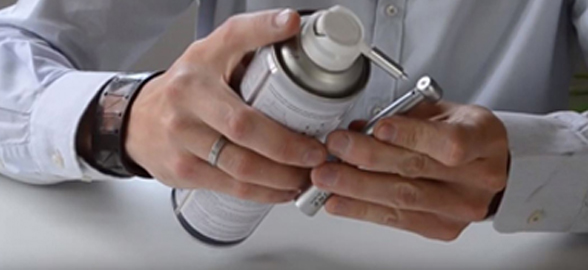Some dental procedures can cause bleeding that is difficult to control and, as dentists, we know that you should always be prepared to deal with this scenario. In this article we'd like to give you a brief, yet practical reminder of the hemostatic agents most commonly used in the dental clinic and which new generation products you should know about to effectively and quickly stop bleeding in various dental procedures. Are you ready? Let's go!
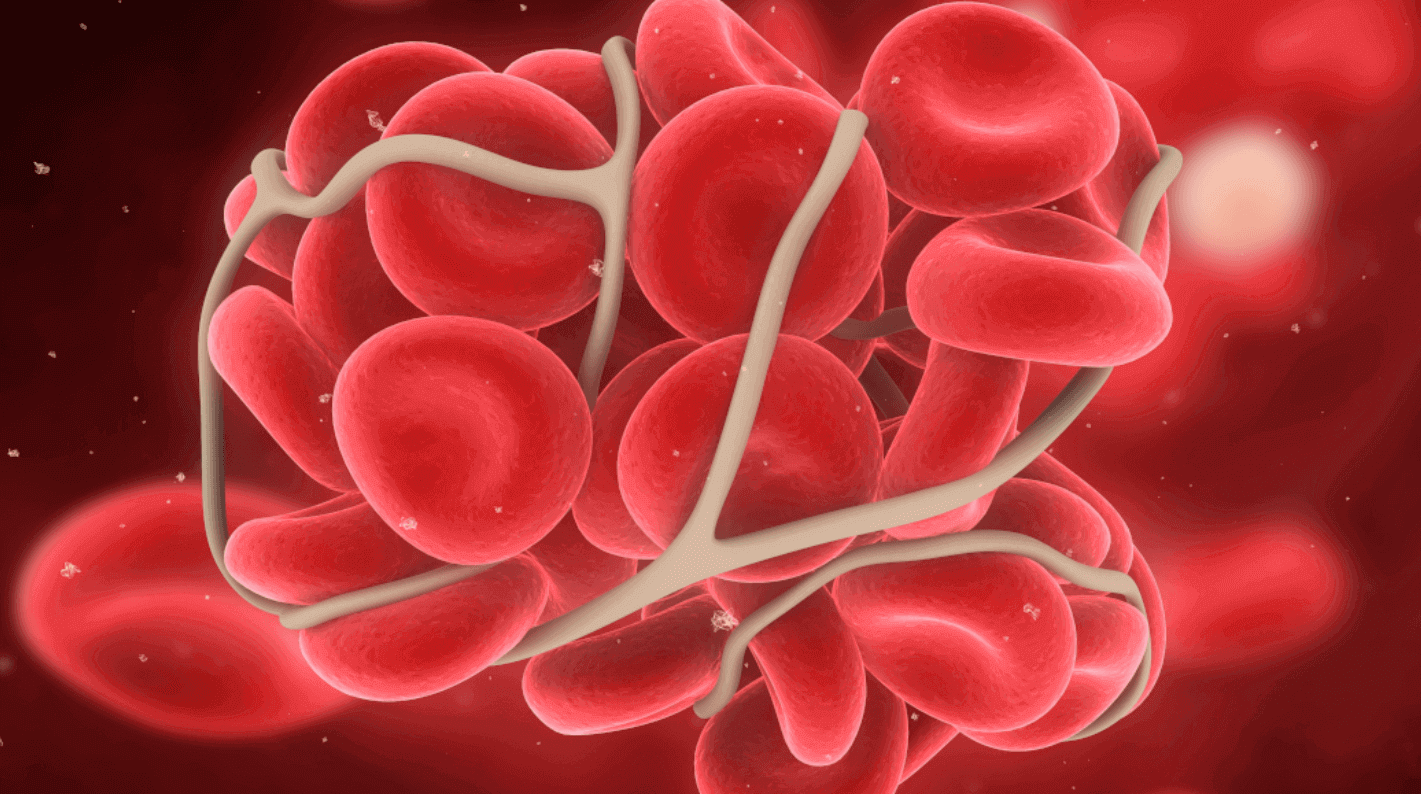
Hemostasis and Hemorrhage
How about we review the concepts?
Hemostasis
Hemostasis is the physiological process that works to keep blood fluid inside blood vessels and, if these are damaged, induces the formation of a hemostatic plug to stop extravasation. It sounds very simple, but it's a complex process involving three main components: the vascular wall (endothelium), platelets and the coagulation cascade.
The process of hemostasis can be divided into:
Primary hemostasis: occurs after the initial injury and begins with vasoconstriction regulated by endothelin, an endothelium-derived vasoconstrictor, and also by neurogenic reflex mechanisms. Simultaneously, the extracellular matrix (ECM) is exposed to facilitate platelet adhesion to the endothelium and form a hemostatic plug through platelet aggregation.
Secondary hemostasis or coagulation: the coagulation cascade is activated by the interaction of fibrinogen and the products secreted by platelets, which activates thrombin which converts soluble fibrinogen to insoluble fibrin that is able to cross-link to build a secondary stable coagulum.
Hemorrhage
A Hemorrhage can be defined as the extravasation of blood due to rupture of a blood vessel. The reasons why a blood vessel may rupture include trauma, atherosclerosis, or inflammatory or neoplastic erosions.
There are many parameters for classifying hemorrhages, including: location, vessel involved, aetiology, size and extent and volume of extravasation.
Hemostasis in the dental clinic
Mild oral bleeding is a common occurrence in the dental practice, but when the intensity and duration increase spontaneously, it is classed as a hemorrhage. Stopping this blood loss is key to ensure the patient's safety and to continue with the procedure.
Controlling the bleeding in the dental clinic is challenging because uncontrolled bleeding can lead to a medical emergency. To get off to a good start, it is essential to carry out a good anamnesis of the patient, taking into account their personal and/or family history that may lead us to suspect a hemostasis disorder; we must also consider systemic processes that may indicate an alteration of the hemostatic mechanism. It is crucial to assess patients with a history of hemopathies, chronic liver disease or thrombocytopenia.
There are various hemostatic materials that can help us to control profuse bleeding, and for practical purposes we will discuss them according to their clinical application.
Control of hemostasis in oral surgery
The extraction of a tooth or any other oral surgical procedure can cause profuse bleeding and the first action we must take to control it is intense and prolonged compression with a dressing. Also, as local measures, we suggest applying ice which favours vasoconstriction, preventing oedema as well as bleeding. Additionally, electrical methods such as electrocautery or CO2 laser are often used.
The following materials can be used to control bleeding in oral surgery:
Aluminium chloride, ferric sulphate and tannic acid: these are astringent-styptics, which act by precipitating proteins and creating a mechanical obstruction of the hemorrhage.
Absorbable gels: these can be in the form of powder, sheets or sponges. They facilitate platelet aggregation, stabilise the clot and are quickly and completely absorbed, so that the wound does not need to be reopened.
A great example of such products are the Gelatamp sponges by Coltene which are composed of foamed gelatine and finely dispersed (colloidal) silver, silver has antibacterial efficacy and is therefore ideal for preventing the development of wound infections. They are very easy to use; in tooth removal, just let the socket bleed, cut a sponge to the appropriate size, place it inside the socket, suture it and that's it!
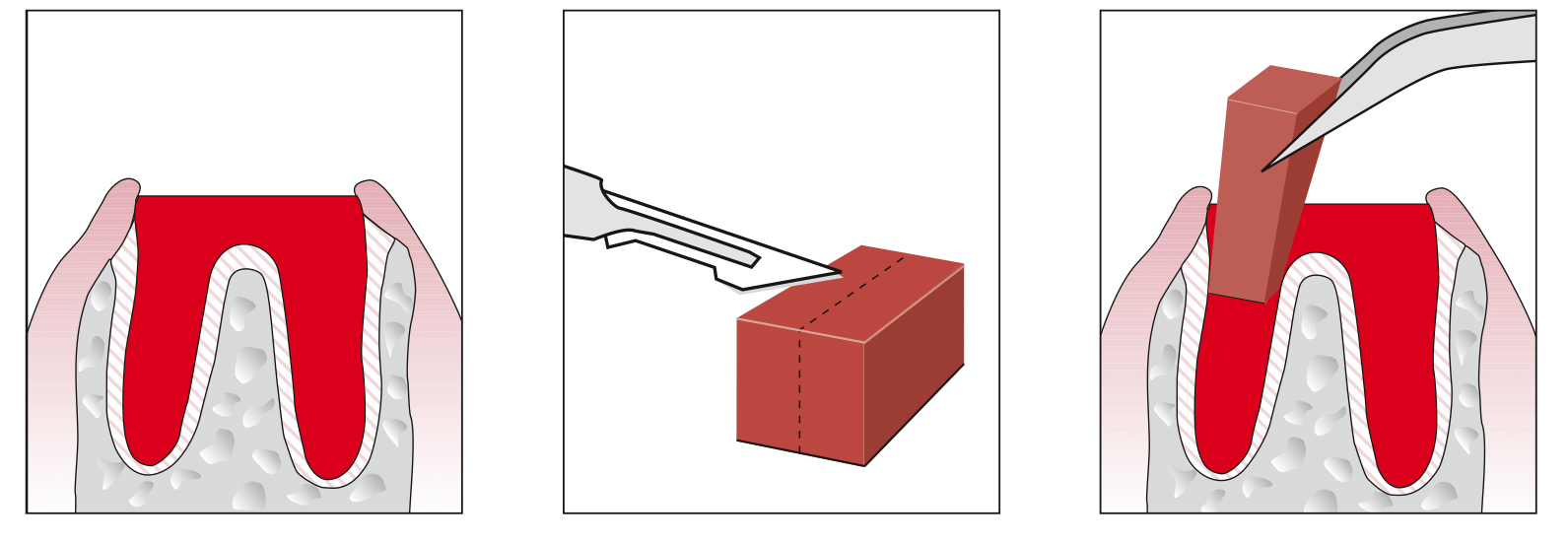
Collagen sponges: absorbable collagen is placed over the area of mild to moderate bleeding and compressed for 2 to 5 minutes, its mechanism of action is to trap platelets in its structure, promoting adhesion.
The Octocolagen collagen sponges by Clarben are perfect for this purpose, as they also have a porous structure that facilitates a better absorption of fluids, assimilating up to 35 times their weight and are completely reabsorbable by the body in 15 days.
Control of hemostasis in adhesive aesthetic dentistry
If your area of specialisation is adhesive dentistry, you will know that gingival tissue management, hemostasis and crevicular fluid control are key to achieving restorations free of microleakage and progressive discolouration.
In adhesive dentistry hemostatic agents fulfil these three functions - which is very practical! All in one.
- Control of hemostasis, by local plugging of the damaged epithelial capillaries.
- Control of gingival crevicular fluid thanks to the reduction of capillary permeability at the level of the epithelial adhesion and sulcular epithelium.
- Gingival retraction, reducing the elasticity of the collagen fibres of the gingival connective tissue.
Hemostatic / astringent solutions in adhesive dentistry
The use of hemostatic solutions significantly improves bond quality and preserves the integrity and longevity of restorations. The most commonly used hemostatic has been epinephrine, however, due to its adverse local and cardiovascular effects, nowadays many dentists are more inclined to use solutions such as ferric sulphate or aluminium chloride. Want to know more about each one? We're going to tell you all about them!
Ferric sulphate: it is mainly characterised by being a mineral astringent that causes deep hemostasis. Its mode of action is a chemical reaction of the blood with iron and sulphate ions that causes the blood proteins to clump together and form a clot.
Ferric sulphate can be used for a variety of dental procedures, including restorative dentistry, fixed prosthodontics and periodontal treatment.
Dentaltip for a perfect impression: remember that ferric sulphate or aluminium sulphate when used to impregnate the retractor wire can inhibit the polymerisation of the addition silicones, therefore before taking the impression it is very important that you make sure to wash the area and remove these solutions completely.
If you are looking for a 5-star hemostatic to control bleeding and sulcular fluid within seconds, we recommend:
ViscoStat: 20% ferric sulphate gel by Ultradent
With ViscoStat there is no need to repeat the impression, one attempt achieves the perfect impression.
- Viscosity gel for instant coagulation.
- Unmatched smoothness towards hard and soft tissues.
- Thixotropic, meaning it does not spill or shift and allows selective application.
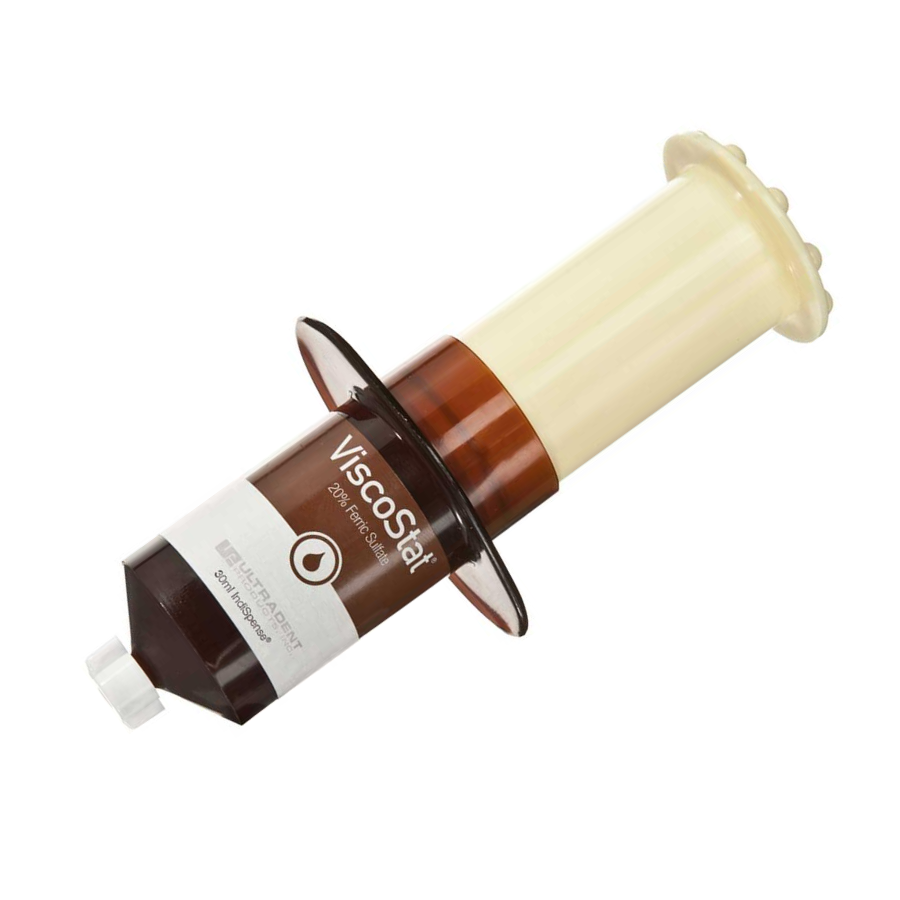
Aluminium chloride: like ferric sulphate, it is also a mineral astringent. It is designed to stop minor bleeding by precipitating tissue proteins, it's an agent that causes very little irritation and has the advantage of keeping the sulcus open more efficiently after removal of the retractor thread.
Similarly to ferric sulphate, aluminium chloride interacts with impression materials such as polyvinyl siloxane and polyether, inhibiting their polymerisation, the recommendation is the same, wash very thoroughly before taking the impression.
If you need an ideal hemostatic for restorations in anterior teeth, we recommend:
ViscoStat Clear: 25% Aluminium Chloride Gel by Ultradent
- Stops minor bleeding and controls sulcular fluid.
- Leaves no residue or staining and rinses off easily.
- Does not form clots.
- The gel facilitates the entry of the thread into the groove.
- No interference with adhesion.
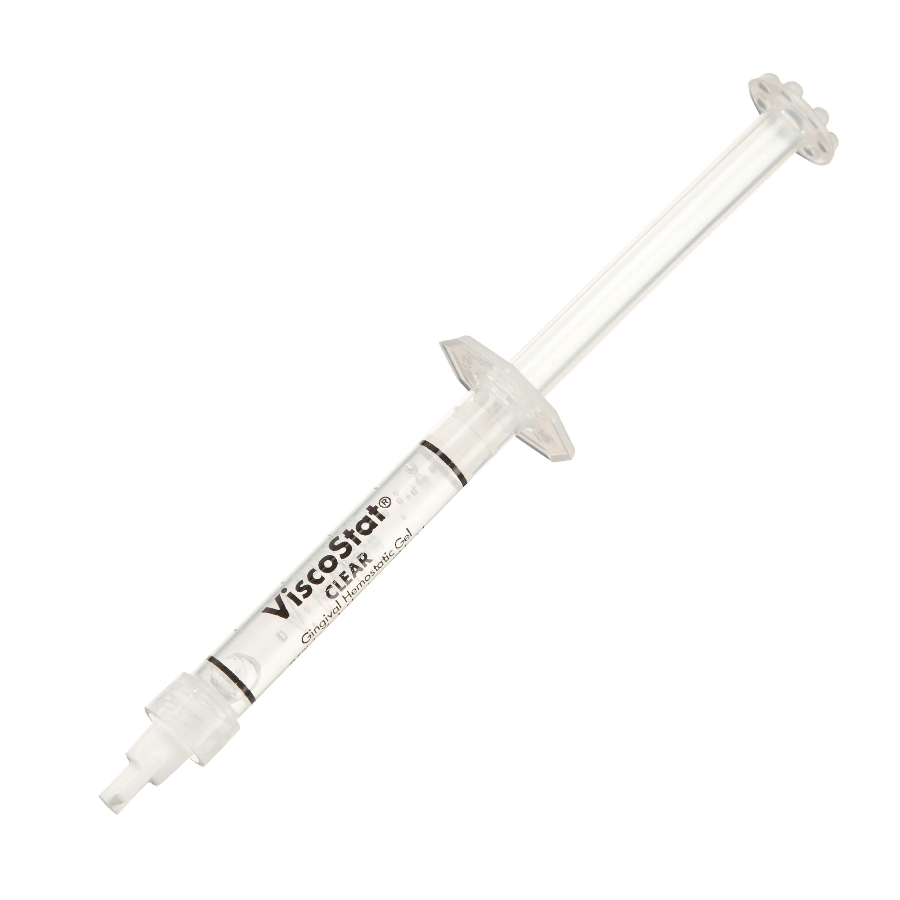
View Ultradent Clear ViscoStat
Hemostasis in dentistry is very important and we should always be aware of patients with a personal or family history of bruising and bleeding to prevent any complications in patients with hereditary coagulopathies such as hemophilia, Von Willebrand's disease or acquired coagulopathies such as patients with vitamin K deficiency or taking anti-aggregation or anticoagulant medication.
At Dentaltix we have many dental hemostatics available so that you can select the most appropriate one for each situation. Remember that if you have any questions, just contact us and we will be happy to help you. If you want to keep up to date with all the latest news and developments in the dental sector, we can't wait to see you on our social networks.
See you soon!





